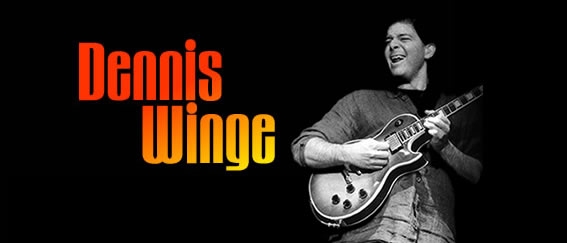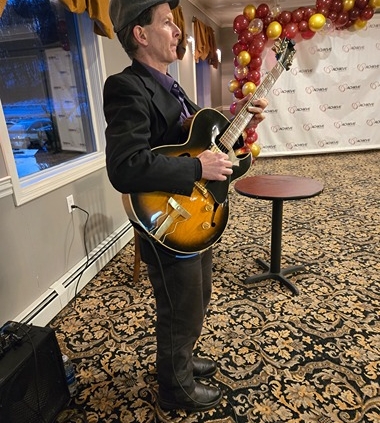Working On My Time-Feel to Suit Multiple Genres
For most of my guitar-playing life, I didn’t focus on rhythm. Like many guitarists, I was more concerned with technique, theory, and phrasing. It wasn’t until about five or six years ago, during the making of my album What Are the Odds?, that I began to truly study rhythm. I sought out a teacher and took lessons from a drummer for many years, which was both fascinating and incredibly helpful.
I recently had a wake-up call when a conga player in my salsa band pulled me aside after a rehearsal and bluntly told me, “You’re rushing.” At first, I was skeptical—I didn’t think I was playing ahead of the beat. But when I went home and listened to the recording, it became painfully clear: he was right.
Reflecting on my past, I realized this wasn’t the first time my timing had been questioned. When I was in my 20s, I had a guitar teacher who came to one of my gigs. He must have thought my time was bad because, after that, he made me practice with super slow notes to a super slow metronome for weeks and weeks—sometimes for half the lesson every single time. I hated it. He never explained why we were doing it, and eventually, I quit. Looking back, I don’t think he should have been teaching me like that. I believe a more effective method would have been to help me think and feel in subdivisions rather than just trying to play perfectly on a metronome with no guidance.
Just leaving a student to their own devices to try and stay locked to a metronome isn’t enough. I now believe that students should be given a variety of time signatures and taught to think in subdivisions, even when the metronome is widely spaced apart—such as clicking only once every four or even eight measures. This approach builds a stronger internal clock and gives the player a better sense of groove and flexibility with time.
My Strength in Timekeeping
I don’t think this has ever been an issue that audiences would notice in my playing because rhythm refinement is a subtle process that many musicians work on behind the scenes. Additionally, I’ve consistently been told that I have a solid sense of time and that I’m strong at locking in with external sources, whether it’s a metronome or other band members. Will Russell, a respected studio engineer I’ve worked with, has specifically remarked that my timing when playing with a metronome is excellent. I’ve always been good at following a metronome and syncing tightly with other musicians.
One story that illustrates this happened during a recording session with Liberty DeVitto, the long-time drummer for Billy Joel. Before the session, the bass player joked that he wouldn’t need to turn the metronome up in his headphones because DeVitto would be his metronome. I, however, cranked the metronome up and followed it precisely. Later, Liberty came over and whispered to me, “You and I are locked in, but the bassist and pianist are rushing.” That moment reinforced for me that I don’t struggle with playing in time with others—I’m just refining and improving my own internal sense of time.
Many musicians don’t realize that if they rely on others for good time and feel, those musicians can feel that reliance, and it can be a subtle burden. Every musician should continually work on improving their own internal sense of time rather than expecting others to hold it together for them.
Understanding Additive Rhythm and Syncopation
One of the biggest breakthroughs in my rhythm journey came from learning the additive approach to rhythm. Instead of thinking in traditional beats and measures, the additive method breaks rhythms into smaller, logical groupings that make syncopation and complex patterns easier to feel.
For example, a common syncopated rhythm like the main melody of Dizzy Gillespie’s Manteca could be difficult to count in a traditional 1-2-3-4 system. However, breaking it into smaller additive groupings like 2 + 3 + 2 + 4 + 2 + 3 allows a musician to internalize the rhythmic flow more naturally.
Another example is in Afro-Cuban music, where clave patterns are central. The 3-2 son clave can be understood as 3 + 3 + 4 + 4, making the accents clearer than a standard metronomic approach. When using konnakol—the South Indian rhythmic language—this becomes “takida takida takadimi taka takadimi,” which helps in maintaining precision at high speeds.
Similarly, syncopated jazz rhythms are often difficult to read, but Mike Longo’s method of anchoring off-beat attacks to the next strong beat makes them easier to feel. Longo suggested counting syncopated patterns relative to the following beat, which helps keep the groove natural and prevents rushing.
Counting Subdivisions
There was another experience that reinforced the importance of subdivisions for me. When I was courting my first wife, we were staying out late a lot, and I was in the recording studio working with a client on a song that was so slow I was literally falling asleep in the studio. The tempo was so sluggish that I had to count four subdivisions per beat (or maybe even eight) just to keep good time. Without that level of subdivision, it was nearly impossible to stay locked into the groove. This experience taught me that extremely slow tempos require a different kind of rhythmic focus—one that depends on breaking down the beat into much smaller units to maintain precision.
The Role of Relaxation
I’ve also noticed that if I’m simply not relaxed, it becomes much harder to avoid rushing. If I’ve had a long day and my body and mind are tired, my ability to stay locked into the groove is compromised. This is why I prefer to practice rhythm in the morning when I’m fresh.
Additionally, I’ve found that my daily meditation practice helps me stay centered and aware of my timing. Meditation cultivates focus and reduces unnecessary tension, which in turn makes it easier to play in the pocket. On gigs, so many other factors can throw off your sense of time:
- Not being able to hear all the instruments clearly.
- Playing a long set without eating and feeling fatigued by the evening.
- Having taught all day and going straight into a performance without warming up.
Final Thoughts
Rushing in music isn’t just a matter of technical timing—it’s about feeling the groove correctly across different styles. Through meticulous self-analysis, metronome exercises, and thinking in subdivisions, I’ve made significant strides in locking into the rhythm. The additive approach has allowed me to internalize complex patterns and syncopations more naturally, while practicing syncopation with methods like Longo’s off-beat anchoring has further improved my time feel.
I still check myself regularly, and I’m constantly refining my sense of time. But now, when I listen back to recordings, I feel more grounded in the groove rather than ahead of it. And best of all, musicians in my bands haven’t had to complain again.
If you struggle with rushing, I highly recommend incorporating these exercises into your practice routine. Feel free to experiment with different approaches, and most importantly, listen—both to yourself and to the seasoned musicians around you.
—
If you are planning a wedding, private party, or corporate event and you want to explore your options for musicians to provide live music, book a free music consultation with me or simply write to me on the contact page.



